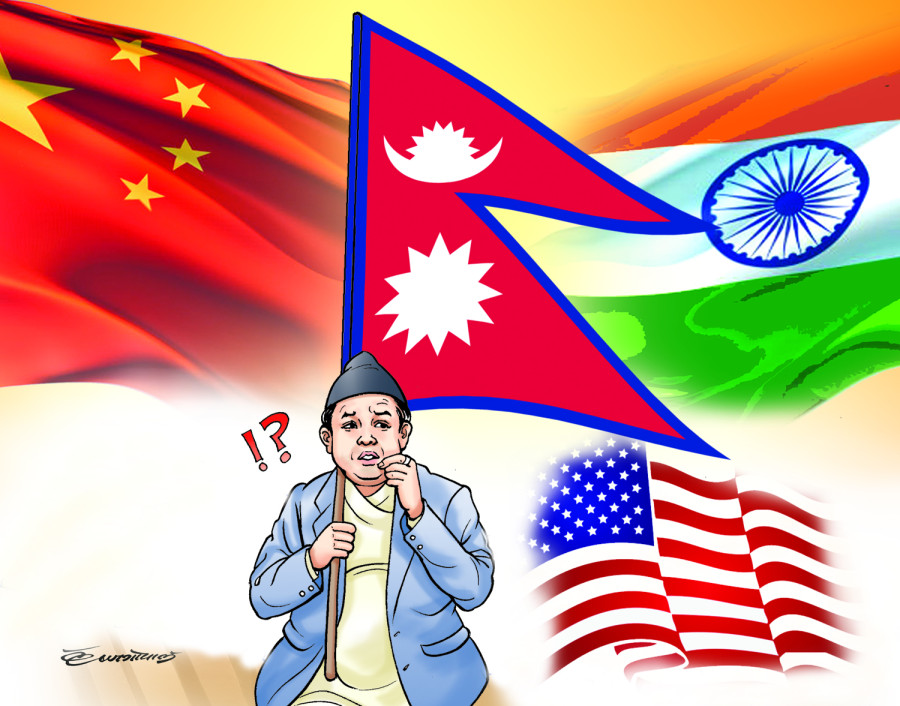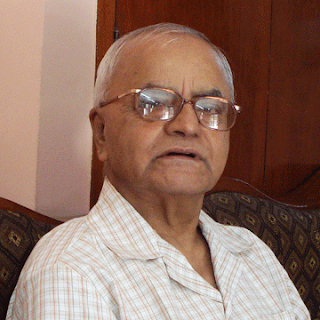Columns
Nepal’s foreign policy problem
The country seems to be lost on what external affairs strategy to adopt, but non-alignment has worked for it in the past.
Lok Raj Baral
India’s External Affairs Minister S Jaishankar and Chinese Foreign Minister Wand Yi visited Nepal in quick succession. Both visits were significant in their own respective reasons. Jayashankar visited Nepal in connection with the Joint Ministerial Meeting held after three years. But his one-on-one meeting with Prime Minister KP Sharma Oli overshadowed the main issues as if the joint meeting was only an excuse for him to visit. The outcome of Wang’s visit hasn’t been explicit, keeping observers guessing whether the prospective visit of the Chinese President Xi Jinping some time in October will occur or not.
The three agreements signed by China and Nepal during the visit were underwhelming. For this, the Oli government has been criticised for its failure to do enough homework. The past agreements Nepal and China have signed are being questioned now, as the implementation schedules of the much-touted projects under the Belt and Road Initiative (BRI) were not elucidated. China seems to be reticent about the projects and has cautioned Nepalis not to be overenthusiastic. They have repeatedly mentioned that the adverse topography of the region and the risk involved make the rail project difficult to expedite. Yet, the Foreign Minister’s visit cannot be discounted for not offering any tangible projects and aid because the symbolic purpose is as significant as actual benefits in diplomacy.
There has been increasing realisation in Nepal that relations with neighbours should be defined and analysed independently. Nepal’s ties with China, for instance, cannot be compared with India, given the various guiding factors such as geographical determinism, socio-economic interdependence, the open border and its wider ramifications and so on. Even changes that information technology and connectivity have brought about, the location of a country still limits to a degree, its diplomacy.
India’s current objective in Nepal is to restore the trust lost in the wake of the constitution-making process and India’ desire to accommodate some of the demands of the Tarai-Madhes parties. When efforts were exhausted for influencing the major political parties leaders in Nepal and when Nepal went on to promulgate its constitution despite Indian opposition, India attempted to use coercive diplomacy in the form of an undeclared economic blockade triggering. The obvious fallout from this was KP Oli’s (and his party’s) victory in the ensuing election. With a view to neutralise anti-India sentiments in Nepal, the Modi government began courting Oli to correct its Nepal strategy. Since then, both the Prime Ministers of Nepal and India are in constant touch intending to restore the historically friendly ties.
But as in the early 1960s, China took advantage of the strained Indo-Nepal relations in 2015-16, with Oli turning to China for new trade and transit points, and a higher degree of road and rail connectivity, to reduce Nepal’s overdependence on India. China and Nepal have entered into agreements for the supply of petroleum products and other goods through the new transit routes that pass through the Tibetan Autonomous Region of China. It is said that these arrangements if implemented, would be a part of the Belt and Road Initiative (BRI). But India’s inability to accept the China Pakistan Economic Corridor (CPEC) because it passes through contested parts of Kashmir has become a hindrance to China’s overall strategy in South Asia.
On its part, India didn’t react strongly to the Sino-Nepal agreements. It knew that the geographic challenges would make any links difficult. Even the Chinese authorities are surprised, if not dismayed, by Nepali expectations—especially the supposition that a Himalayan railway will be built easily and quickly. For China, given the increasing volume of trade and other economic activities taking place between the two countries, the real motive behind a future rail link seems to be access to India. Moreover, given the increasing personal contacts established at the highest level, and efforts being made for reducing all kinds of tensions including borders, China would be less inclined to antagonise India, despite India’s reservations regarding the Belt and Road Initiative. Similarly, India would not like to corner China by playing the role of a spoiler, contrary to its proclivity to be competitive with China with the backing of the United States and other Western and Pacific powers. India has now maintained a calculated distance by not aligning fully with the Trump administration’s strategy in the Indo-Pacific Region.
Global politics and diplomacy are quite complicated, currently. Nepal, as the present government’s foreign policy demonstrates, is confused as to its role in all of this. It has also been unable to articulate its foreign policy strategies based on short, medium and long-term objectives. Nepal never objected to being included in the United States’ Indo-Pacific Strategy until it received criticism. Then, the government’s clarification specified how Nepal’s policy is not to take sides in any global strategy. Nepal Communist Party Co-Chair Pushpa Kamal Dahal, in his meeting with the Chinese Foreign Minister in Kathmandu on September 10, apparently reassured China that Nepal would be no party to any such American strategy or alliance. Surprisingly, however, instead of a statement being issued by the Nepali government, it was the Chinese government in Beijing that publicised Prachanda’s assurances that Nepal ‘disapproves’ of the US-led Indo-Pacific Strategy. Reacting to it in a satirical tone, the US Embassy in Kathmandu sought clarification from Nepal stating ‘we have asked our embassy in Beijing to verify the statement issued there. If true, it is bewildering that we now learn about Nepal’s positions from statements issued from Beijing’.
As a small land-locked country with a non-aligned record, Nepal’s policy of equidistance in this regard is the correct one. However, Nepal itself has allowed the controversy to develop. It was the Nepali foreign minister’s meeting with his American counterpart in Washington DC, where the US announced Nepal’s acceptance of the Indo-Pacific Strategy, that began this entire episode. Nepal’s subsequent clarification denying ‘joining’ any strategic partnership should have settled the dust kicked off in China, Nepal and the United States. But the case is just the opposite.
***
What do you think?
Dear reader, we’d like to hear from you. We regularly publish letters to the editor on contemporary issues or direct responses to something the Post has recently published. Please send your letters to [email protected] with "Letter to the Editor" in the subject line. Please include your name, location, and a contact address so one of our editors can reach out to you.




 7.12°C Kathmandu
7.12°C Kathmandu















